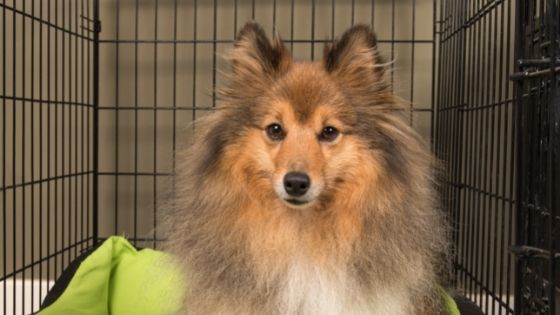Crate Training 101
What is Crate Training?
Crate training is a technique that teaches your pup that their crate is a safe, comfortable space for them to rest. It triggers their natural instinct to seek out a cozy den and is useful for dogs of all shapes, sizes, and personalities.
Why
Why crate train? We know some people may feel anxious about crating their dog, thinking it’s cruel to keep them cooped up, but when done correctly, it’s exactly the opposite! Crate training has many benefits, both for you and your dog.
- Crate training keeps puppies and older dogs with destructive behavior safe when they are unsupervised. Curious pups that aren’t constantly under your keen eye may chew inappropriately or even eat something dangerous. Keeping them in the crate during times when you cannot be vigilant keeps your pup happy and safe.
- In addition to behavior management, crates teach your dog that they have a space to relax when they get overwhelmed. If company, kids, or other dogs in the home are becoming overstimulating, a crate-trained pooch can use his kennel as a quiet place to relax and recuperate.
- Finally, crates are valuable in a variety of travel situations like moves and emergencies (e.g., evacuations to a new location). In these potentially stressful situations, crates are a familiar space your dog is comfortable in. As routine-oriented creatures, the sense of habit and home with a crate helps curb anxiety and stress in properly trained canines.
How-To Tips and Tricks
Now that you know why it’s important to crate train a dog, what is the best way to do it? Here are a few of our best practices to help you get started.
Start Young. Getting your dog used to a crate at an early age is ideal because they are impressionable, which provides the perfect opportunity to familiarize themselves with their space and your chosen routine. While older dogs may also respond to a crate, you may have to overcome some learned behaviors that make training take slightly longer.
Get the Right Size. Crates should be large enough for your dog to stand up and turn around in, but not much larger than that, especially if you are just starting. A crate that is too big feels less secure (and comfortable) to your dog, who prefers to be nestled. If you are simultaneously potty training, a larger space invites more accidents without repercussions, as there is enough space for your puppy to sleep away from the soiled area. Generally, dogs don’t like to sit in their own mess.
Practice Positive Reinforcement. When starting to crate train, it is best practice to do as many positive actions in the crate as possible. Feed every meal placing the food bowl far inside the crate, away from the door. Start by leaving the door open so the dog can walk in and out of the crate, maybe even lay down for a bit after eating. Once comfortable going into the crate, you can quietly close the crate door while they eat. While your dog is eating, leave the kennel closed and for at least fifteen minutes after. These small intervals will start getting your pup accustomed to relaxing in the space with a positive connotation.
Additionally, you can keep a separate, kennel-safe toy with your pup while she is in her kennel so that it feels like a special and rewarding experience. Be sure to also praise and feed your dog high-reward treats when she starts going in the crate on her own, or when she is being quiet for extended periods of time.
Start slow. Don’t expect your dog to immediately enjoy being in his kennel for several hours. When your dog is younger, a general rule you can practice is one hour of kennel time for every month of age (e.g., a five-month-old puppy can comfortably stay in his kennel for no more than five hours). But please be aware that there is a limit to this advice – don’t leave your ten-month-old puppy in their crate for ten hours. Assess the situation consistently, listening for any whining when you return home and once your pup starts feeling comfortable in their kennel, feel confident in leaving them overnight while sleeping or for a few hours at a time while you’re out. For a bonus tip: give your pup plenty of exercise before kenneling them for any period of time. Remember: a tired dog is a happy dog.
No matter what, don’t forget to be patient with your pup. Crate training can take time, but will ultimately result in a calmer, more confident dog and happy home. Need more advanced help? Talk to one of our experienced trainers at Off-Leash K9 today during a free consultation!

